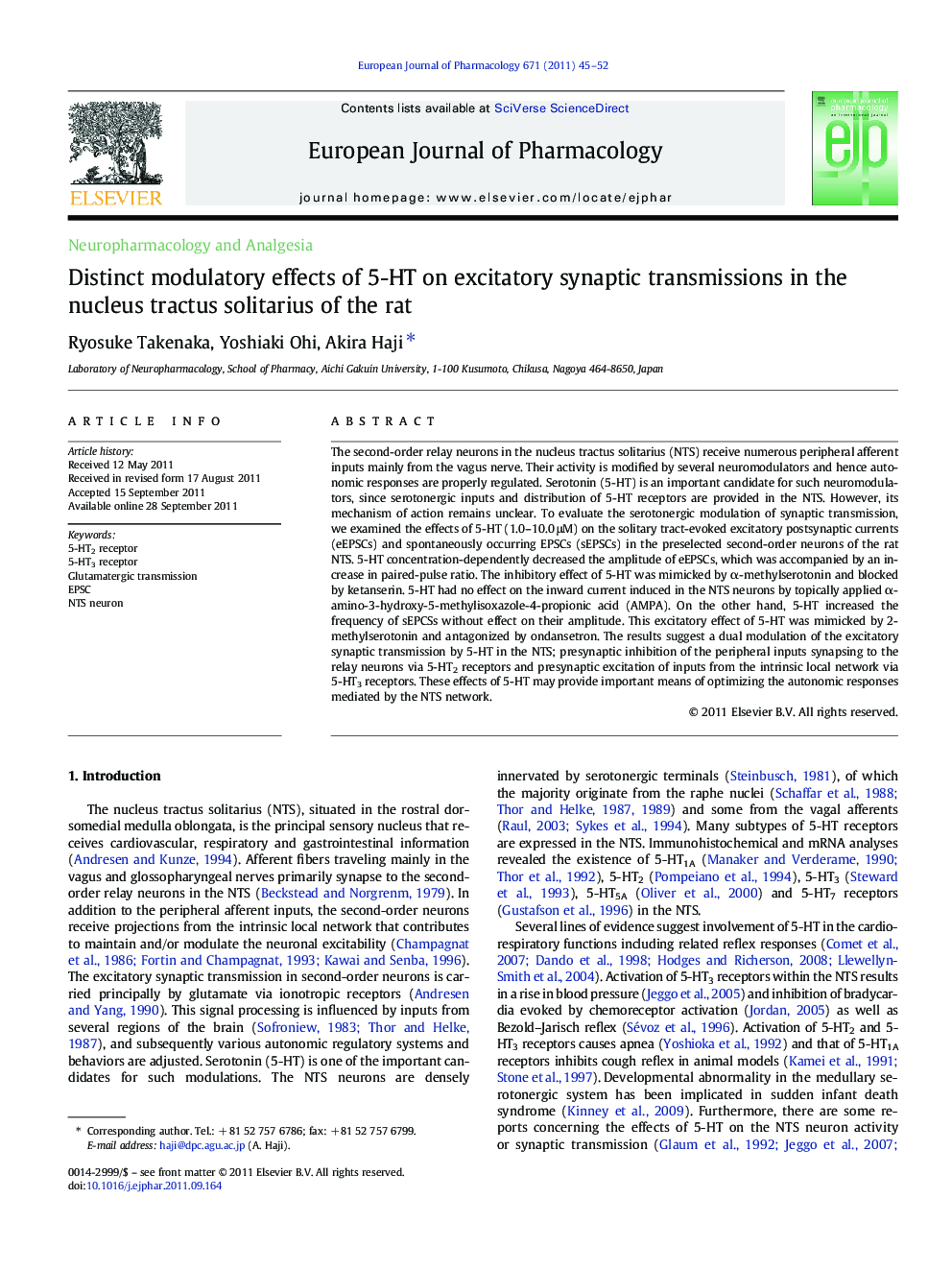| Article ID | Journal | Published Year | Pages | File Type |
|---|---|---|---|---|
| 5830031 | European Journal of Pharmacology | 2011 | 8 Pages |
Abstract
The second-order relay neurons in the nucleus tractus solitarius (NTS) receive numerous peripheral afferent inputs mainly from the vagus nerve. Their activity is modified by several neuromodulators and hence autonomic responses are properly regulated. Serotonin (5-HT) is an important candidate for such neuromodulators, since serotonergic inputs and distribution of 5-HT receptors are provided in the NTS. However, its mechanism of action remains unclear. To evaluate the serotonergic modulation of synaptic transmission, we examined the effects of 5-HT (1.0-10.0 μM) on the solitary tract-evoked excitatory postsynaptic currents (eEPSCs) and spontaneously occurring EPSCs (sEPSCs) in the preselected second-order neurons of the rat NTS. 5-HT concentration-dependently decreased the amplitude of eEPSCs, which was accompanied by an increase in paired-pulse ratio. The inhibitory effect of 5-HT was mimicked by α-methylserotonin and blocked by ketanserin. 5-HT had no effect on the inward current induced in the NTS neurons by topically applied α-amino-3-hydroxy-5-methylisoxazole-4-propionic acid (AMPA). On the other hand, 5-HT increased the frequency of sEPCSs without effect on their amplitude. This excitatory effect of 5-HT was mimicked by 2-methylserotonin and antagonized by ondansetron. The results suggest a dual modulation of the excitatory synaptic transmission by 5-HT in the NTS; presynaptic inhibition of the peripheral inputs synapsing to the relay neurons via 5-HT2 receptors and presynaptic excitation of inputs from the intrinsic local network via 5-HT3 receptors. These effects of 5-HT may provide important means of optimizing the autonomic responses mediated by the NTS network.
Related Topics
Life Sciences
Neuroscience
Cellular and Molecular Neuroscience
Authors
Ryosuke Takenaka, Yoshiaki Ohi, Akira Haji,
